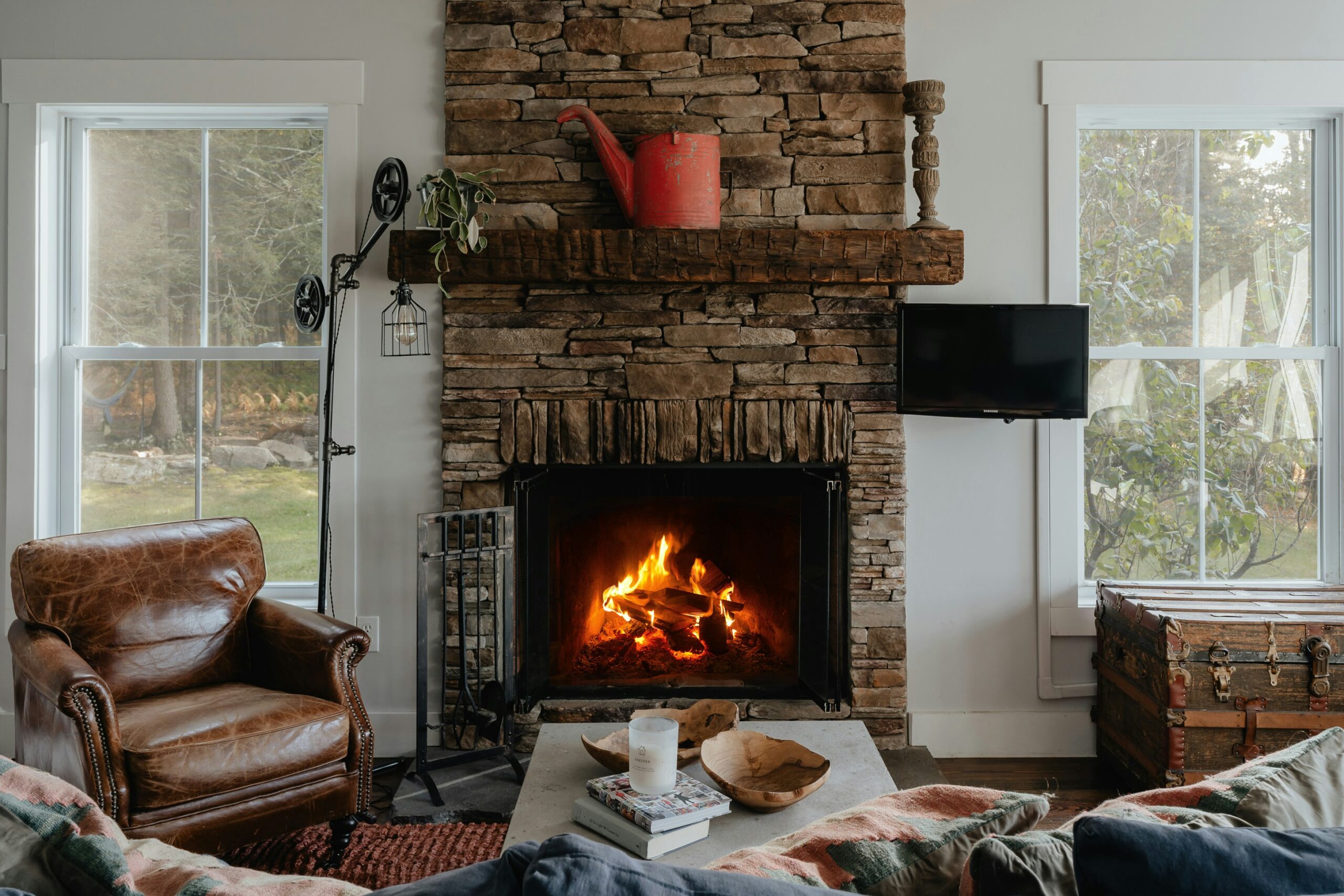In 2025, even as homes become more efficient and tech-driven, there’s a resurgence in a very old idea: that a fire belongs at the centre of home life. Whether gas, electric, or a modern bioethanol unit, fireplaces and stoves are making a comeback — not just as sources of heat but as architectural and emotional focal points.
Today, we’ll explore why we still crave a hearth in the modern age, how design trends are evolving in the UK, and practical tips for bringing that fire-lit warmth into your own home.
The timeless appeal of fire: psychology & atmosphere
Why fire means more than heat
- Firelight taps into something primal: our ancestors gathered around it for safety, comfort and community.
- The gentle flicker and warmth create a calming, meditative ambiance — ideal for winding down in the evening.
- Research in interior psychology suggests that ambient lighting and warm tones boost mood, reduce stress, and make spaces feel more intimate.
Fire as the emotional centrepiece
- In open-plan layouts, a fireplace or stove breaks up large expanses and draws eyes inward.
- Homes with a hearth often host more social moments: reading, conversation, shared time without screens.
- In colder months across the UK, a fire becomes the place people gravitate toward — creating lasting memories of seasonal coziness.
Modern fireplace trends in the UK (2025)
In the UK, fireplace design is evolving to suit contemporary needs and regulatory pressures. Here are some of the prominent trends to watch:
Minimalist surrounds & feature walls
Sleek stone, fluted panels, or flush mantel designs are now popular in UK interiors, balancing the fire with clean lines.
Media wall integration
Fireplaces are being built flush into TV walls or feature walls — combining heat, visual appeal and multi-functionality.
Eco & low-emission options
In smoke control zones, bioethanol and electric fires are rising in popularity. These units emit no soot and have fewer constraints on installation.
Multi-sided & see-through designs
Double-sided or corner units are being used as “dividers” inside open plans, allowing a view and warmth from multiple rooms.
Bold material combinations
We’re seeing stone, plaster, terracotta, metal and wood all in the same surround scheme. These mixes give texture, contrast and character.
Gas vs Electric vs Bioethanol: which suits your home?
Each fire type has pros and trade-offs. Help your readers decide by comparing:
| Feature | Gas Fires | Electric Fires | Bioethanol / Flueless |
| Installation complexity | Needs flue or balanced flue; Gas Safe engineer required | Simple; can recess or wall mount | Very flexible — no chimney needed (ideal for flats) |
| Running cost & efficiency | Good if connected to natural gas; depends on heat output | Electricity cost, but efficient; can run “flame only” mode | Fuel cost variable; typically used for ambiance, moderate heat |
| Emissions / air quality | Clean when installed properly, but some concerns in urban areas | Very clean — no combustion byproducts | Clean burn; suitable for smoke control zones |
| Visual realism & ambience | Realistic flame, some models with logs, flame control | Modern flame effects, colour options, flame + heat separation | Real flame, flicker, no logs; aesthetic appeal strong |
| Restriction zones | Some areas restrict solid fuel, but many gas models are acceptable | None | Often allowed even in stricter zones |
Tip for UK readers: If your home is in a smoke control area (common in many towns and cities), check if your choice of fire is permitted. Bioethanol and many electric units offer strong flexibility in those cases.
Integrating a hearth into modern living spaces
Here are practical tips to make a fireplace feel natural (not forced) in a contemporary UK home:
Scale & proportion
Ensure the fire / surround complements the room size. A too-small unit will look lost; too large will dominate. Use mockups or tape outlines to visualise before buying.
Positioning & sightlines
Place the fireplace where it’s visible from seating zones. Not necessarily central; corner or double-sided units can be smart alternatives in open plans.
Surround materials & textures
Mix softer textures (wood, plaster, timber) with harder ones (stone, slate). Keep material palettes limited to 2-3 to avoid visual chaos.
Lighting & layering
Add indirect lighting, floor lamps or sconces. At night, combine fire glow with dimmable lamps for depth.
Accessory styling
Stylish fire tools, a neat basket of kiln-dried logs (even next to an electric fire for effect), a minimal hearth rug — these subtle touches elevate the look.
Maintenance, safety & energy considerations
Even the best fireplace will fail to delight if it’s poorly maintained. Share these with your readers:
Annual servicing & checks
Gas units should be inspected by a Gas Safe engineer. Flues (if applicable) need sweeping or checking.
Carbon monoxide and ventilation
Install CO detectors, especially for gas units. Ensure adequate airflow, ventilation and correct clearances.
Efficiency & lower heat loss
Close internal doors, use glass doors where possible, install good insulation around the chimney.
The hearth is far from dead — it’s simply evolving. In the UK in 2025, homeowners want fireplaces that do more than give warmth. They want design, atmosphere, clean operation, flexibility and emotional resonance.
If you’re planning a renovation or new build, think beyond the flame: consider how the hearth will live within your room, how it will age with your style, and how it can quietly enrich your daily life.

No responses yet